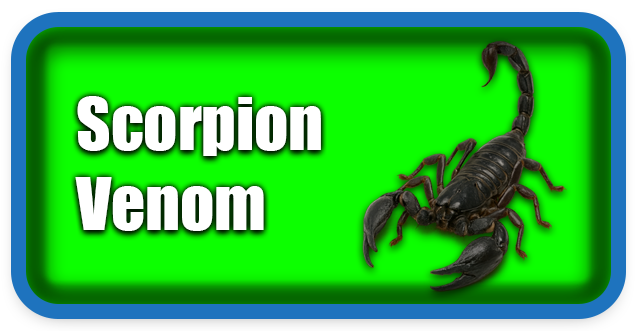⏲️ Estimated reading time: 7 min
Scorpion Venom vs. Hemolymph: Which Is More Expensive and Why?
The answer is clear: scorpion venom is far more expensive than hemolymph. Learn how venom is “milked,” why its price can reach millions per liter, what medical uses it has, and why hemolymph holds almost no commercial value.
Scorpion Venom
Why Scorpion Venom Is Among the Most Expensive Liquids in the World
When we talk about the most expensive liquids in the world, scorpion venom always makes the list. This is not simply because it comes from a creature that inspires fear. Rather, it is due to the fact that producing it is incredibly rare, extracting it is both difficult and risky, and its unique biochemical composition turns it into a precious resource for biomedical research.
In contrast, scorpion hemolymph often described as the animal’s “blood” does not enjoy the same prestige. Unlike venom, it has no significant commercial market, and therefore, it does not command noteworthy prices.
Moreover, venom and hemolymph differ greatly in how they are valued and applied. Venom is actively studied in laboratories around the world, while hemolymph remains mostly of academic interest. Consequently, when comparing the two, venom costs incomparably more.
To understand this better, we will explore several aspects step by step. First, we’ll look at how venom is harvested and why the process is so complex. Then, we will highlight who uses it and for what purpose. Afterward, you will discover what a liter of venom can be worth on the open market. Finally, we will examine why genuine and legal offers are almost impossible to find. At the end, you’ll also see a comparison with other expensive liquids in the world, providing additional context..
What Is Scorpion Venom and How Does It Differ from Hemolymph?
Venom
Venom is a biochemical cocktail of toxins and peptides (short chains of amino acids) that scorpions produce in specialized glands located in the telson (the stinger at the tip of the tail). Its natural role is to immobilize prey and defend the scorpion.
From a scientific standpoint, this mixture contains compounds that act with incredible precision on ion channels (sodium, potassium, calcium, chloride), receptors, or enzymes. This fine molecular targeting makes venom valuable for medical research, the development of painkillers, diagnostic tools, targeted therapy, and even bioinsecticides.
Hemolymph
Hemolymph is the “blood” of arthropods (scorpions, spiders, insects). It circulates in an open system, transporting nutrients, hormones, and metabolic waste. While it may contain hemocyanin (a copper-based respiratory pigment) and some antimicrobial peptides, unlike venom it has no major commercial value. It is studied in laboratories mainly for basic physiology or immunology, not for high-value pharmaceutical applications.
Conclusion of this section: Venom is a rare, high-value biochemical product with advanced applications. Hemolymph is a physiological fluid with little commercial demand.
Why Is Venom So Expensive?
1) Rarity and tiny yield
A single scorpion produces only micro-liter or microgram amounts of venom per milking. Collecting just a few milliliters requires multiple extractions over time. To obtain 1 liter of venom, one would need millions of scorpions and years of work.
2) Risky and difficult collection

Venom is extracted using controlled electrical stimulation, a process that requires skilled handlers, special equipment, and strict safety protocols. The risks of accidental stings or contamination are real.
3) Storage and purification challenges
Venom must be stabilized, refrigerated, freeze-dried (lyophilized), or purified to preserve its activity. This often includes expensive steps such as chromatography, which raises the cost per unit even further.
4) Medical and scientific demand
Certain peptides, such as chlorotoxin from the Israeli yellow scorpion (Leiurus quinquestriatus), have shown potential for targeting tumors, inspiring diagnostic tools and therapies. Others are key in neuroscience for studying ion channels. Even if only a few make it into clinical use, the research value drives demand and high cost.
5) Regulations and traceability
Authentic venom requires strict legal compliance, animal welfare standards, biohazard handling licenses, and traceable supply chains. International shipping also demands cold chain storage and compliance with IATA regulations, all of which increase costs.
How Much Does Scorpion Venom Cost?
- Popular claims suggest prices of $7–10 million USD per liter (depending on species and purity).
- In practice, venom is sold in milligrams or micrograms, not liters.
- Authentic venom comes with certificates of analysis, purity levels, and documentation.
- Cheap online offers are usually fraudulent or fake products.
By contrast, hemolymph has no significant international market and almost no commercial value.
How Is Venom Collected (Safely)?
- Scorpion selection – species, health, feeding history.
- Controlled environment – proper light, humidity, and temperature.
- Electrostimulation – carefully applied to release venom without harming the animal.
- Sterile collection – using microtubes or capillaries.
- Stabilization – freezing or lyophilizing for long-term storage.
- Analysis – confirming purity with HPLC or mass spectrometry.
⚠️ Important: Venom collection is carried out only in licensed labs with professional handlers. Attempting this at home is dangerous, unethical, and often illegal.
Does Species Matter?
Yes. Venom composition differs among species. Some produce peptides targeting sodium channels, others potassium or calcium. The species and venom profile determine its value and demand in research.
Why Hemolymph Has Almost No Value
- No strong demand – not needed in pharmaceuticals.
- Easy to obtain – labs can collect their own.
- Few special molecules – lacks unique peptides that justify a commercial price.
Scientific and Medical Applications of Venom
- Neuroscience – studying nerve signaling via ion channels.
- Painkillers – developing alternatives to opioids.
- Cancer research – chlorotoxin shows tumor-binding potential.
- Autoimmune disease research – modulating immune pathways.
- Bioinsecticides – targeting pests with precision.
- Diagnostics – as biochemical probes and standards.

FAQ
Can private individuals buy scorpion venom?
No. It is sold only to accredited labs with strict documentation.
Why do I see cheap offers online?
Most are scams. Genuine venom is heavily regulated and comes with certificates.
Can I milk a scorpion at home?
No. It is unsafe, unethical, and usually illegal.
Are there synthetic alternatives?
Some peptides can be synthesized, but natural venom remains essential for research.
Does hemolymph have medical uses?
Rarely. It is useful only in basic research, not in medicine.
Comparative List: Most Expensive Liquids (Estimates)
| Liquid / Substance | Notes | Price Range (approx.) |
|---|---|---|
| Scorpion venom | Sold in μg/mg, extremely rare, biomedical demand | Up to millions USD/L |
| Botulinum toxin solutions | Sold in small doses, not by the liter | Extremely high |
| Snake venoms (e.g., cobra) | Used in antivenoms and research | Hundreds of thousands USD/L equivalent |
| Custom DNA/peptides | Synthetic, lab-specific | Very high |
| Monoclonal antibodies | Pharmaceutical production | High |
| Human blood/plasma | Regulated healthcare product | Moderate |
| Rare essential oils | e.g., Damask rose oil – requires tons of petals per liter | High but not comparable |
| Luxury perfumes | Market-driven branding value | High retail |
| Printer ink (retail) | High relative to household products | High per liter |
| Mercury/gallium | Industrial use, much cheaper than venoms | Low–moderate |
Myths Debunked
- “Scorpion venom cures everything.” False. It has potential but is no universal cure.
- “Anyone can sell it.” False. Requires licenses, ethics, and biosecurity.
- “Cheap venom online is real.” Almost always fake.
Final Takeaway
- Venom = extremely expensive, sold in micro-units, vital for research and potential medicine.
- Hemolymph = nearly worthless commercially, used only in basic science.
Scorpion venom is nicknamed “liquid gold” because of its rarity, risks in handling, and its potential to unlock medical breakthroughs. Hemolymph, on the other hand, remains just a biological fluid of limited research interest.
🔔 For more tutorials like this, consider subscribing to our blog.
📩 Do you have questions or suggestions? Leave a comment or contact us!
🏷️ Tags: scorpion venom, hemolymph, biomedical research, ion channels, chlorotoxin, peptide toxins, scorpion farming, lab safety, rare liquids, pharmaceutical research
📢 Hashtags: #ScorpionVenom, #Hemolymph, #RareLiquids, #BiomedicalResearch, #Neuroscience, #OncologyResearch, #IonChannels, #Toxins, #PharmaInnovation, #LiquidGold
Only logged-in users can submit reports.
Discover more from HelpZone
Subscribe to get the latest posts sent to your email.

